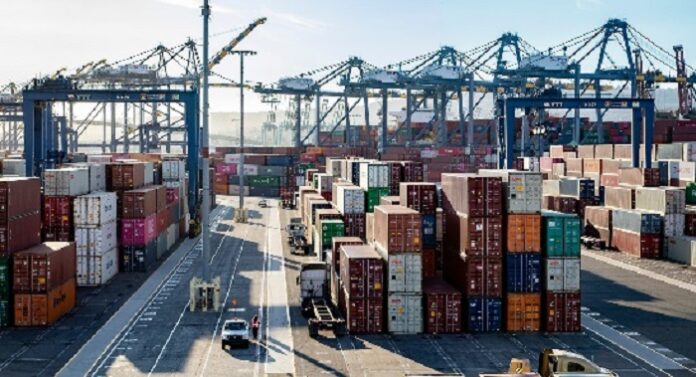
-
Port of Los Angeles cargo volume fell 25% y-o-y in October
-
New York/New Jersey Port holds on to accolade as busiest US port it won in August
-
The change of fortunes comes as import shipments are shifted away from US West Coast ports over fears of a likely port workers’ strike
Cargo volume at Port of Los Angeles fell 25% year on year in October, as a continuing shift of shipments to the East Coast dashed the gateway’s hopes of wresting its top ranking from Port of New York and New Jersey.
Formerly the busiest US gateway, Los Angeles Port handled 678,429 twenty foot equivalent units (TEUs) last month, taking its total volume for the first 10 months of 2022 to 8,542,944 TEUs, about 6% off last year’s record pace. Its strongest month this year was July.
“With cargo owners bringing goods in early this year, our peak season was in June and July instead of September and October,” Port of Los Angeles executive director Eugene Seroka said during a media briefing on November 15.
“Additionally, cargo has shifted away from the West Coast as some shippers await the conclusion of labor contract negotiations. We’ll do everything in our power to get that cargo back because the best route between Asia and the United States is straight through the Port of Los Angeles.”
The port’s October loaded imports reached 336,307 TEUs, down 28% from the previous year. Loaded exports came in at 89,722 TEUs, a decline of 8.7% from October last year. Empty containers landed at 252,401 TEUs, down 25% y-o-y.
Los Angeles port’s October volume was 4.6% less than its 709,873 TEUs in September, when it climbed up one rung to the No.2 spot.
New York/New Jersey port, meanwhile, was the US’ busiest port for the second month running in September with its cargo volume rising 16.3% y-o-y to 842,219 TEUs.
Los Angeles port lost its top ranking to New York/New Jersey in August and fell to No.3 behind its neighbor Port of Long Beach, as Asian goods shipments to US importers were moved to the East Coast and Gulf Coast ports to avoid the congestion and delays on the West Coast.
The LA gateway moved 805,314 TEUs in August, 37,877 TEUs less than the New York/New Jersey port’s 843,191 TEUs. Long Beach came in second, moving 806,940 TEUs of export and import containers.
In Tuesday’s media briefing, Seroka was joined by Los Angeles Mayor Eric Garcetti and Dr. Jerry Nickelsburg, director of the UCLA Anderson Forecast.
Garcetti offered his thoughts as he leaves office after two terms leading America’s second-largest city. Nickelsburg discussed key economic factors in 2023 and their potential impact on global trade.
“In a time of great uncertainty, it is important to look at data, the evidence, to understand recessions, inflation, and policy as they affect the economy going forward,” Nickelsburg said. For 70 years, the UCLA Anderson Forecast has been a leading, unbiased forecasting organization focused on global, national, state and local economies.
On November 10, the adjacent Port of Long Beach in San Pedro Bay, California, said its cargo throughput in October fell 16.6% y-o-y to 658,428 TEUs in October following reduced consumer demand and the shift of imported goods towards the Gulf and East Coasts.
The volume contraction was led by a 23.7% drop in imported goods to 293,924 TEUs. Exports slipped 2% to 119,763 TEUs while empty containers moved through the port fell 13.4% to 244,743 TEUs.
“The supply chain is returning back to normal and cargo continues to move, so I am optimistic that store shelves will be stocked and goods will be available for delivery during the holiday season,” said Port of Long Beach executive director Mario Cordero.
“Over the long term, the San Pedro Bay ports complex will continue to be a competitive, strategic and sustainable gateway for transpacific trade.”
The Port of Long Beach had moved roughly 8 million TEUs in the first 10 months, up 1.5% from the same period in 2021.




